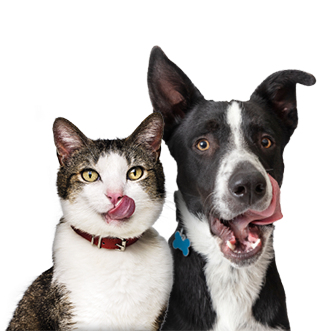
-
Find the right food for your pet
Take this quiz to see which food may be the best for your furry friend.
Find the right food for your pet
Take this quiz to see which food may be the best for your furry friend.
Featured products
 Adult Healthy Cuisine Roasted Chicken, Carrots & Spinach Stew Dog Food
Adult Healthy Cuisine Roasted Chicken, Carrots & Spinach Stew Dog FoodDelicious roasted chicken paired with tender vegetables in a succulent stew
Shop Now Small & Mini Savory Stew with Chicken & Vegetables Dog Food
Small & Mini Savory Stew with Chicken & Vegetables Dog FoodA delicious complement to the nutrition of Science Diet Small & Mini 7+ dog food
Shop Now Adult 7+ Perfect Digestion Chicken, Whole Oats & Brown Rice Recipe Dog Food
Adult 7+ Perfect Digestion Chicken, Whole Oats & Brown Rice Recipe Dog FoodScience Diet's breakthrough nutrition supports ultimate digestive well-being & healthy microbiome for dogs age 7+
Shop NowFeatured products
 Adult Savory Entrée Can Variety Pack Cat Food
Adult Savory Entrée Can Variety Pack Cat FoodPrecisely balanced nutrition with the delicious taste of savory minced chicken to help fuel the energy needs of cats during the prime of their life
Shop Now Adult 7+ Tender Tuna Dinner Cat Food
Adult 7+ Tender Tuna Dinner Cat FoodWith delicious chunks in a decadent gravy
Shop Now Adult 7+ Senior Vitality Chicken & Vegetable Stew Cat Food
Adult 7+ Senior Vitality Chicken & Vegetable Stew Cat FoodImproves Everyday Ability to Get Up & Go
Shop Now -
Dog
- Dog Tips & Articles
-
Health Category
- Weight
- Food & Environmental Sensitivities
- Urinary
- Digestive
- Joint
- Kidney
-
Life Stage
- Puppy Nutrition
- Adult Nutrition
- Senior Nutrition
Cat
- Cat Tips & Articles
-
Health Category
- Weight
- Skin & Food Sensitivities
- Urinary
- Digestive
- Kidney
-
Life Stage
- Kitten Nutrition
- Adult Nutrition
Featured articles
 Why Are Dogs and Cats So Cute?
Why Are Dogs and Cats So Cute?If waggy puppy dog tails and furry kitten yawns make you swoon, you're not alone. Why are cats so cute? And, dogs too! Let's find out!
Read More Do Dogs and Cats have Belly Buttons?
Do Dogs and Cats have Belly Buttons?Learn whether cats & dogs have belly buttons like humans, what the function is, and if there are any health concerns associated with it.
Read More Does My Pet Hate Me?
Does My Pet Hate Me?Learn tips for bonding with your pet if you've ever thought, 'My dog doesn't like me, or 'Why do I have a standoffish cat?'
Read More -


You just noticed that your pet has some spotting on their body, and your veterinarian informed you that it's from vitiligo. But what is vitiligo in dogs and cats? Here are all the basics.
What Is Vitiligo in Dogs & Cats?
Vitiligo is a rare skin condition that some humans may develop, but so can cats and dogs. A human or animal with this condition experiences depigmentation, which occurs when the skin loses its natural pigments. The skin will turn white (or light pink) in patches and hair in those spots can also turn white.
Tri-County Animal Hospital in Wayne, New Jersey reported that vitiligo is a "condition characterized by symmetrical lack of pigment in the skin and white hair coat, especially involving the face and nose."
What Causes Vitiligo?
Is vitiligo something that can be "caught" from another animal with the condition? Simply stated, no. Austin Veterinary Emergency & Specialty (AVES) confirms that vitiligo is not contagious. However, this condition is often hereditary, so if a previous generation experienced depigmentation, your cat or dog is more likely to develop this uncommon skin condition. It's not clear why vitiligo occurs, but it's believed that it happens when something interferes with the body's melanin-producing cells.
Are Some Cats and Dogs More Likely to Get It?
If you're worried that your dog or cat might develop vitiligo, don't be too concerned, especially if you haven't noticed any white skin or hair spots. This skin condition is quite rare, though there are some breeds that are more likely to get it than others.
Tri-County Animal Hospital noted that vitiligo is common in dog breeds such as "Belgian Tervuren, German shepherd dogs, Doberman pinschers, rottweilers, German shorthaired pointer, Old English sheepdog, and dachshunds." Siamese cats may be predisposed as well.


Tasty Tips
Young pets may need several visits in their first year for vaccinations. Adult pets generally benefit from annual check-ups, while senior or special-needs pets might require more frequent visits.
Should You Be Worried About Depigmentation?
If you know your pet's bloodline and there haven't been any other cases of vitiligo in previous generations, you don't need to worry. However, pet parents who don't know their animal's family history of skin conditions might want to point out any of their pet's skin changes to their vet.
Since most cases of vitiligo in dogs and cats occur when they're young, depigmentation at an older age may require a visit to the vet. It may be easy to confuse going gray (a natural sign of aging) with losing skin pigmentation due to a medical condition. Hypothyroidism, stress, and kidney and liver disease may be the culprit behind depigmentation, according to AVES.
Vitiligo in cats and dogs is nothing to fear. Vitiligo in pets is painless and do not act any different as a result. Your pet will still live a happy life with some special spotting. Just make sure to discuss any skin changes with your vet!


Erin Ollila believes in the power of words and how a message can inform—and even transform—its intended audience. Her writing can be found all over the internet and in print, and includes interviews, ghostwriting, blog posts, and creative nonfiction. Erin is a geek for SEO and all things social media. She graduated from Fairfield University with an M.F.A. in Creative Writing. Reach out to her on Twitter @ReinventingErin or learn more about her at http://erinollila.com.
Related products

Improves Everyday Ability to Get Up & Go

Precisely balanced nutrition with the delicious taste of savory minced chicken to help fuel the energy needs of cats during the prime of their life

With delicious chunks in a decadent gravy

Supports energy level and beautiful fur in mature cats
Related articles

Learn tips for bonding with your pet if you've ever thought, 'My dog doesn't like me, or 'Why do I have a standoffish cat?'

If waggy puppy dog tails and furry kitten yawns make you swoon, you're not alone. Why are cats so cute? And, dogs too! Let's find out!

Learn whether cats & dogs have belly buttons like humans, what the function is, and if there are any health concerns associated with it.

Discover how your pets might be impacted by the loss of another. Learn how to recognize their signs of grieving & how to help them cope with their loss.

Put your pet on a diet without them knowing
Our low calorie formula helps you control your pet's weight. It's packed with high-quality protein for building lean muscles, and made with purposeful ingredients for a flavorful, nutritious meal. Clinically proven antioxidants, Vitamin C+E, help promote a healthy immune system.
Put your pet on a diet without them knowing
Our low calorie formula helps you control your pet's weight. It's packed with high-quality protein for building lean muscles, and made with purposeful ingredients for a flavorful, nutritious meal. Clinically proven antioxidants, Vitamin C+E, help promote a healthy immune system.

